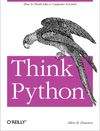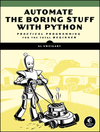|
|
| Line 6: |
Line 6: |
| | !style="background: #cccccc"| Assignments | | !style="background: #cccccc"| Assignments |
| | |- | | |- |
| − | || Assignment 1]] | + | |[[OPS435_Online_Assignment_1| Assignment 1]] |
| | |- | | |- |
| | |[[OPS435_Online_Assignment_2| Assignment 2]] | | |[[OPS435_Online_Assignment_2| Assignment 2]] |
Revision as of 14:47, 6 June 2020
Welcome to OPS435 - Open System Automation
What This Course is About
This course is the fourth in a series of courses about Linux technologies
- OPS435 will help you learn how to read, write, and maintain scripts which assist with common system administration tasks. The days of performing all administrative tasks manually has come to an end, now you must move forward into a world of automation.
- ULI101 taught you to be Linux user.
- OPS235 taught you to move from being a Linux user to being a Linux system administrator.
- OPS335 taught you to administer Linux servers.
- OPS435 will teach you to automate many tasks associated with system administration.
- You will practice the writing of many scripts, reinforcing the importance of automation and reusable code. You will be introduced to powerful tools used in system administration, which will give you experience in solving problems more effectively. As a system administrator you will be responsible for maintaining more than just a few servers, you will learn the skills to manage large scale networks, in preparation for cloud computing.
- In this course you will use a ssd(in a usb enclosure) with your own computers to create VM using VMWare Workstation, similarly to other Linux courses. However, this time you will also use your account on matrix.senecacollege.ca for creating and testing scripts for each lab. This course can be broken up into 2 halves. The first half of this course will cover learning the python language. The second half of this course, will cover powerful administration systems, and allow you to apply your python knowledge to extend these systems.
Learning by Doing
Most of the learning in this course occurs through interactive labs that give you feedbacks as you work through each task. While this feedback may help, the solutions will still need to be found by you. There are many ways to solve each problem you may encounter in this course, letting you improve through practice. The way you solved a problem at the beginning of the semester may not be the way you solve it near the end of the semester. Trying to solve previous labs, after learning new material, may prove insightful.
|
Required Materials
| Devices |
Software and Hardware for Online Learning |
|
Solid State Drive (SSD) |
Minimum Capacity: 100 GB |
|
Account on Matrix
matrix.senecacollege.ca |
|
CentOS 7 - Latest Stable Version
(refer to link in lab1) |
|
Think Python by Allen B. Downey
(Available in print and online) |
|
Automate the boring Stuff with Python by AL Sweigart
(Available in print and online) |
|
Course Faculty
During the Summer 2020 semester, OPS435 is taught by:
 Azzad Kara(Section A) azzad.kara@senecacollege.ca |
|
FAQ
- Am I too old to learn programming?
Wiki Participation
- You can edit these pages! Please feel free to fix typos or add links to additional resources. Please use this capability responsibly.






